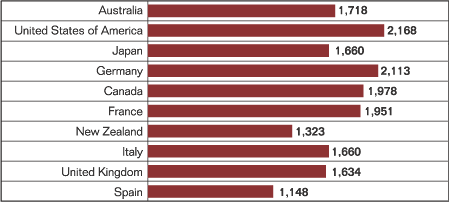Demand for cataract surgery in New Zealand outpaces resources
Without increased government funding, surgery in the public sector may become limited to the severely impaired, a surgeon says.
Click Here to Manage Email Alerts
Attempts by the government of New Zealand to control the demand for health services, coupled with insufficient funding for cataract surgery, are resulting in many cataract patients being denied treatment in the public sector, despite universal health coverage, according to a surgeon there.
Prof. Charles N.J. McGhee, PhD, FRCS, FRCOphth, FRANZCO, FRSA, clinical director of ophthalmology for the Auckland District Health Board, said the government introduced a point-score system in the late 1990s in an attempt to rationalize procedures based on need with the aim of reducing waiting lists, which were as long as 3 years in some areas.
The point-score system was meant to assure surgery to patients with the greatest need or to those who would benefit most, Prof. McGhee said. The system guaranteed patients would be seen by a specialist within 6 months and then treated within another 6 months if they qualified for surgery. Thus the maximum anyone should have to wait for surgery would be 1 year.
However, because of insufficient funding to provide the number of surgeries sought, about half of all patients in the country are forced to seek services in the private sector, he said.
Prof. McGhee noted that much of New Zealand’s population has private health insurance, and many patients go to the private sector from the start. But he said he feels the government is relying too heavily on private insurance.
“The standard of care in the public sector is every bit as high as in the private sector. The problem is that the demand on the service outweighs the funding,” he said.
An international sampling: Source: World Health Organization |
Scoring inequities
Under the point-score system, a standardized form is completed during the patient assessment, Prof. McGhee said. The form records the patient’s visual acuity and other factors such as activities of daily living and systemic diseases. Responses are assigned a numerical value and totaled to create an overall score. This score determines whether the patient is eligible for surgery.
For example, in Auckland, which has the largest ophthalmology department in the country, patients generally will receive cataract surgery if their score is about 25 out of a possible 50. Prof. McGhee said this might mean both the patient’s eyes had a visual acuity less than 20/40, or perhaps one 20/20 and the other 20/80.
According to Prof. McGhee, in areas outside of Auckland, such as South Auckland, which have fewer resources and larger Maori and Pacific Islander populations, patients need a higher score before cataract surgery is performed.
He explained that the Maori and Pacific Islanders tend to develop cataracts 10 years earlier than whites, who make up most of New Zealand’s population. They are also diagnosed with more severe cases.
Aging population
Under the current system, patients added to a waiting list wait an average of 3 months before seeing a specialist, although it is not uncommon for patients to wait 6 months, Prof. McGhee said.
Although the figures change constantly, approximately 200 patients are removed from Auckland City Hospital’s list each week after undergoing surgery or receiving medical treatment. This number is offset by the number of new referrals each week, which are in excess of 200, Prof. McGhee said.
“At the moment ... we have actually gone up to about 250 new patients per week, and our capacity is probably a margin of less than 200. [This] means we have 50 new patients every week that we do not have the capacity to see,” he said.
“I think it may get to the point ... where people will be rationed to having cataract surgery in only one eye, which I think is already happening elsewhere in New Zealand,” he said. “Until we get the government to turn around and give us more money, I think the problem is just going to grow.”
For Your Information:
- Prof. Charles N.J. McGhee, MB, BSc, PhD, FRCS, FRCOphth, FRANZCO, FRSA, can be reached at the Department of Ophthalmology, Faculty of Medical & Health Sciences, The University of Auckland, Private Bag 92019, Auckland, New Zealand; +64-9-373-7599; fax: +64-9-367-7173; e-mail: c.mcghee@auckland.ac.nz.
- Michael Piechocki is an OSN Staff Writer who covers all aspects of ophthalmology, specializing in oculoplastics. He focuses geographically on Europe and the Asia-Pacific region.

